
Design and Construction with Information
Landscape Architecture Construction International Conference is scheduled for December 14-15, 2019 at the School of Architecture, Tsinghua University, Beijing, and the Landscape Architecture BIM Construction Workshop will be organized during December 16-20, 2019, as the extended program of the conference.
The Landscape Architecture Construction International Conference is to compose an international academic communicating platform for the specific research field of landscape architecture technologies.
The theme of the conference is Design and Construction with Information. In the context of the rapid development of new generation of information technology featured with mobile internet, big data and artificial intelligence, etc., the application of IT technology has been profoundly reshaping the common-days lifestyle as well as influencing the way of industrial production. Under such circumstances, new techcological application fields and new research topics are emerging in the profession of landscape architecture. This conference is to answer to such topics and exchange researches and applications concerning IT application for landscape architecture especially for landscape architectural design and construction. Directions and predictions of IT application for the profession are to be discussed and pictured through the conference for the participates.
This conference will include four topics: Technology Development and Design Response, Landscape Information Modelling(LIM), Information Technology Application as Research, and Information Technology Application in Projects. Distinguished scholars, devoted educators and experienced practitioners will gather under the topics to give presentations. A workshop will be held afterwards to train the participants with the skills of operating software and system to practice with information.
Organizers:
School of Architecture, Tsinghua University;
Chinese Steering Committee of Landscape Architecture Education
Hosts:
Department of Landscape Architecture, School of Architecture, Tsinghua University;
Theory & History Committee of Chinese Society of Landscape Architecture;
Landscape Architecture Construction Branch of Chinese Society of Landscape Architecture;
Planning and Design Branch of Chinese Society of Landscape Architecture
Supporter: Chinese Society of Landscape Architecture
Registration
Time: all day on December 13, 2019
Place: Lobby of the School of Architecture, Tsinghua University
Conference
Time: December 14-15, 2019
Venue: Jackson Wang Hall, School of Architecture, Tsinghua University, Beijing
Workshop
Time: December 16-20, 2019, Registration at the same time as the conference registration
Venue: Information Center, School of Architecture, Tsinghua University, Beijing
| Time | Contents |
| December 13 | Registration |
| December 14 | Opening
Keynote speech and seminar |
| December 15 | Keynote speech and seminar
Closing |
| December 16-20 | Workshop: BIM Construction Application for Landscape Architecture |

Time: 9:00-18:00, December 16-20, 2019
Location: Information Center, School of Architecture, Tsinghua University
Workshop Coaching team:
Peter Petscheck, Guo Yong
Andreas Luka, Mariusz Hermansdorfer
Other special guests will be invited to introduce the frontiers of technology development and related market trends.
Workshop training content:
December 16-19, 2019, training for Autodesk Revit in landscape architecture design in the morning; and the Autodesk Civi3D application training in landscape architecture design in the afternoon. A half-hour lecture will be arranged in each afternoon, with the subjects of LIM development, LIM system application, LIM teaching, LIM calculation, and secondary development of LIM covered.
On December 20, 2019, the round table meeting for the participants will be held for the presenting the results of the workshop and exchanging the participants’ respective teaching, research and project experience.

Wang Ke,Deputy Director-general,Department of Building Energy Conservation and Science and Technology
住建部建筑节能与科技司 副司长:汪科
Chen Zhong, Chancellor, Chinese Society of Landscape Architecture
中国风景园林学会理事长:陈重
Qiang Jian, Deputy Chancellor, Chinese Society of Landscape Architecture
中国风景园林学会副理事长:强健
Yang Zhongquan, Deputy Secretary-general, Chinese Society of Landscape Architecture
中国风景园林学会副秘书长:杨忠全
Jin Hexian, Deputy Secretary-general, Chinese Society of Landscape Architecture, Journal of Chinese Landscape Architecture
中国风景园林学会副秘书长,《中国园林》杂志社社长:金荷仙
Wang Zhongjie, Board Chairman, Branch of Planning and Design, CHSLA
中国风景园林学会规划设计分会理事长:王忠杰
Shang Zifu, Secretary-general, Branch of Construciton, CHSLA
中国风景园林学会园林工程分会秘书长:商自福
Chu Jinhui,Deputy Secretary-general,Professional Committee of Big Data and Information, China Association for Engineering Construction Standardization
中国建筑标准化协会大数据信息化专委会副秘书长:楚锦辉
Zheng Xi, Deputy Dean, School of Landscape Architecture, Beijing Forestry University
北京林业大学园林学院副院长:郑曦
Lin Guangsi, Chair of Department of Landscape Architecture, School of Architecture, South China University of Technology
华南理工大学建筑学院风景园林系 系主任:林广思
Yang Yunfeng, Assistant Dean, School of Landscape Architecture, Nanjing Forestry University
南京林业大学园林学院院长助理:杨云峰
Hu Jie, Deputy President, Beijing Tsinghua Tongheng Urban Planning and Design Institute
清华同衡规划设计研究院副院长:胡洁
Zhu Yufan, Deputy Chair, Department of Landscape Architecture, School of Architecture, Tsinghua University
清华大学建筑学院景观学系副系主任:朱育帆
Zhuang Weimin, Chinese Academy of Engineering Academician,Dean of School of Architecture, Tsinghua University, Chinese Academy of Engineering academicians
清华大学建筑学院院长,中国工程院院士:庄惟敏

Peter Petschek
教授 瑞士拉帕斯维尔应用科学大学风景园林系系主任
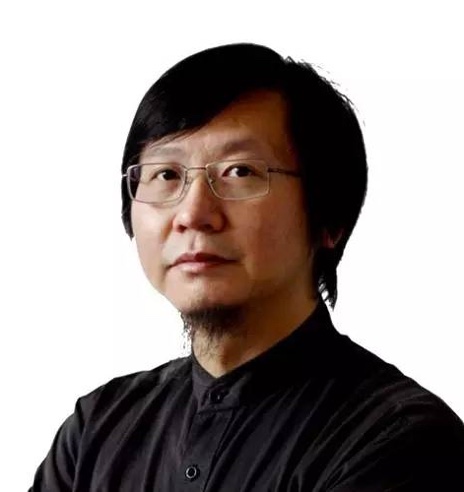
朱育帆
教授 清华大学建筑学院景观学系副系主任

Ron Henderson
教授 伊利诺伊理工大学建筑学院景观与城市设计系主任
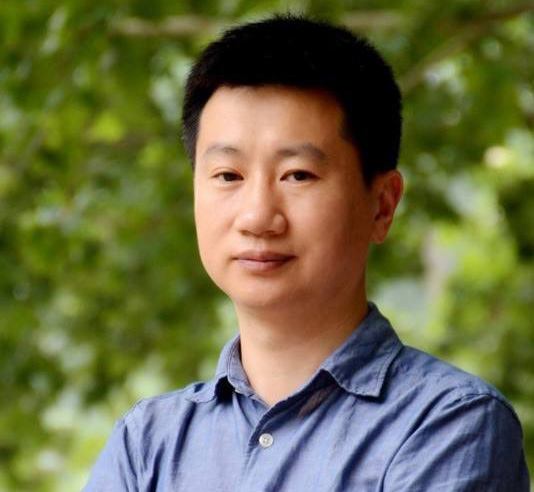
黄蔚欣
副教授 清华大学建筑学院
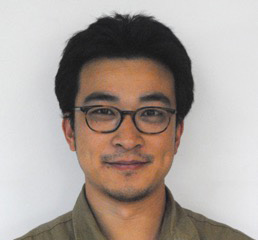
郭湧
助理教授 清华大学建筑学院景观学系
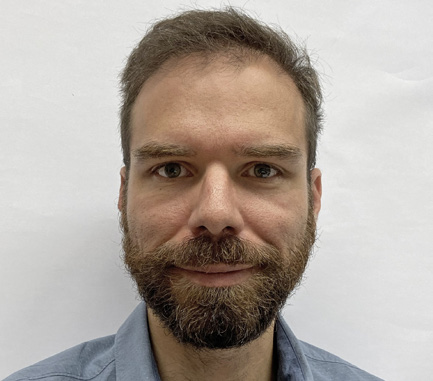
Jose Miguel Lameiras
讲师 波尔多大学科学系风景园林专业

宋晓宇
首席执行官 光辉城市(重庆)科技有限公司

Mariusz Hermansdorfer
技术总监 安博戴水道公司合伙人、哥本哈根大学博士研究生
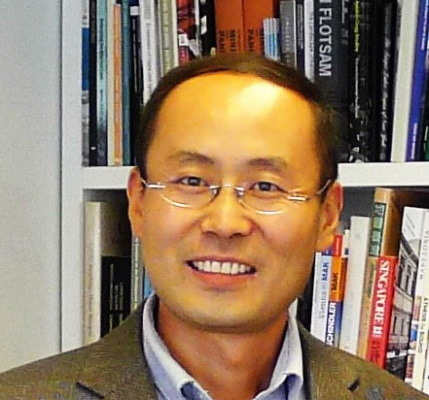
刘海龙
副教授 清华大学建筑学院景观系
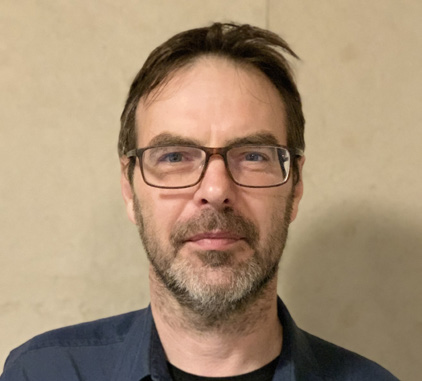
Andreas Luka
主任 北京市新青年风景园林发展研究中心数字技术事业部
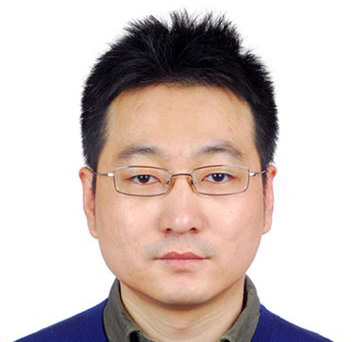
包瑞清
讲师 西安建筑科技大学建筑学院

Heike Rahmann
讲师 墨尔本皇家理工大学建筑与城市设计学院
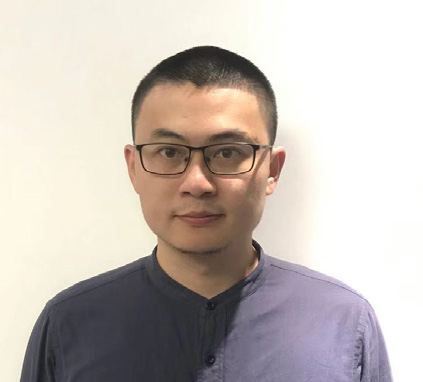
李长霖
首席执行官 北京甲板智慧科技有限公司
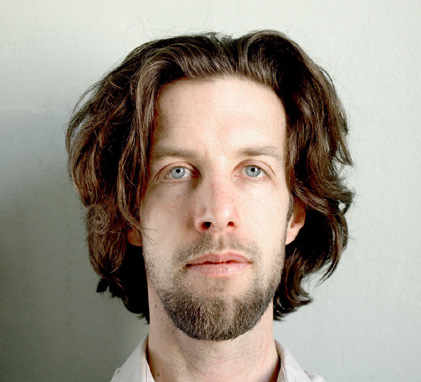
Dominik Mohs
博士、创始人 柏林工业大学环境规划建筑学院景观学系、Dominik Mohs建筑事务所
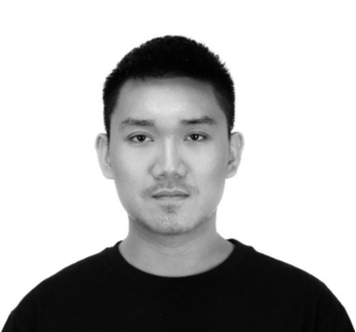
周怀宇
博士生 清华大学建筑学院景观学系
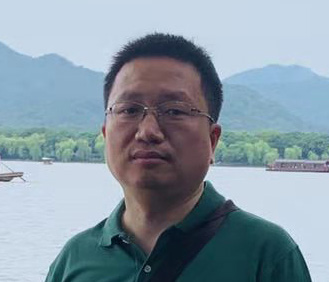
Henry Gu
国际平台副总经理 上海华测导航技术股份有限公司

宋姗
工程建设行业技术专家 欧特克软件(中国)有限公司

Troy Rigby
亚太区销售总监 美国天宝(Trimble)导航有限公司
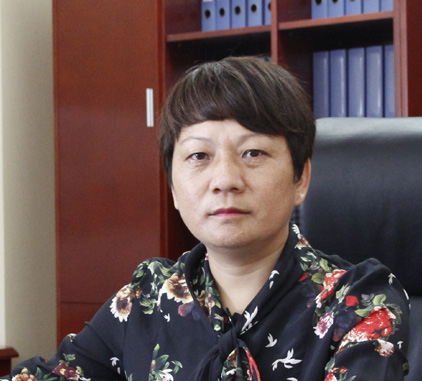
潘会玲
副总经理 华艺生态园林股份有限公司
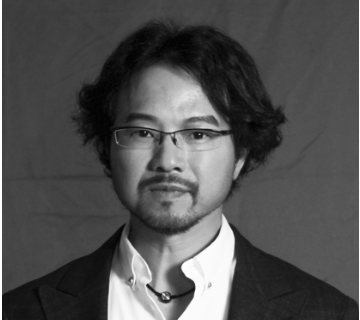
叶劲枫
规划事业部总裁 广州普邦园林股份有限公司
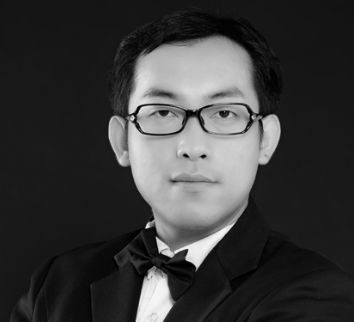
贾培义
北京设计院院长 广州普邦园林股份有限公司
The 1st Landscape Architecture Construction International Conference (LACIC) opened at Tsinghua University, with the theme of ” Design and Construction with Information”,on December 14-15, 2019. The two-days-long conference covered 4 topics: “Technology Development and Design Response”, “Landscape Information Modeling (LIM)”, “Information Technology Application as Research” and “Information Technology Application in Projects”. The workshop: BIM Construction Application for Landscape Architecture was held from December 16 to 20 as an extended program of the conference to train college teachers and practitioners from planning and design institutes.
The Conference opening ceremony was held on December 14. ZHUANG Weimin, Academician of Chinese Academy of Engineering and Dean of the School of Architecture,Tsinghua University; WANG Ke, Deputy Director of the Department of Building Energy Conservation and Technology of the Ministry of Housing and Urban-Rural Development; CHEN Zhong, President of Chinese Society of Landscape Architecture, attended the opening ceremony and addressed to the conference. GUO Yong, Vice Chairman and Executive Director of the conference and Assistant Professor of Department of Landscape Architecture, School of Architecture, Tsinghua University presided over the opening ceremony.

ZHUANG Weimin addressed to the conference
ZHUANG Weimin pointed out in his speech that Landscape Architecture Construction is an important research field within the secondary discipline of Landscape Architecture Technology and Science, also one of the important dimensions of Landscape Architecture education at Tsinghua University. There has always been the academic tradition of integrating theory with practice as well as attaching importance to projects construction at School of Architecture, Tsinghua University. The curriculum of the Department of Landscape Architecture, which is characterized by applying sciences and technologies, offers the courses of Landscape Technology, Grading, Landscape Architecture Construction etc. And the research focusing on the Information Technology application and on the Landscape Information Modeling (LIM) amongst the other research aspects have been in progress and begun to feature the faculty’s research. ZHUANG Weimin hoped that this conference will carry out the in-depth communication and joint efforts with the participants, so that it can form an international platform on Landscape Architecture Construction and Landscape Sciences and Technologies , as well as promote the communication between the academia and profession.

WANG Ke addressed to the conference
WANG Ke addressed his congratulations to the conference on behalf of the Department of Energy Conservation and Science and Technology of the Ministry of Housing and Urban-Rural Development. He introduced that the Building Information Modeling (BIM) technology has been developing rapidly in the building construction industry and has contributed to optimize the practicing environment and to improve the efficiency of the life cycle design in China. The promotion of such technologies as digitalization, 3D and informatization is laying a good foundation for furtherly developing China’s Smart Cities. WANG Ke believed that the priority is to improve the informatization standards system for the building construction enterprises to apply new technologies such as information modeling as well as to enhance the promotion, training and implementing of the standards; and the following effort is to facilitate the ability of applying BIM and CIM (City Information Model) by offering necessary participation, supports and guidance to pilot projects.

CHEN Chong addressed to the conference
CHEN Zhong extended warm congratulations on the holding of the Conference on behalf of Chinese Society of Landscape Architecture. He said that Landscape Architecture Construction is one of the core contents of the professional practice; to achieve the goals of the national policies such as ecological civilization with Chinese characteristics in the new era, the implementation of the construction of beautiful China, harmonious coexistence between human and nature, protection and restoration of the ecological environment, as well as the green development of urban and rural areas, Landscape Architecture Construction is “the last kilometer”. New ability is needed for the Landscape Architecture Construction in order to cope with international issues such as global climate change, biodiversity conservation and sustainable social development. The information technologies of the new generation are increasingly applied in an in-depth manner in all fields of social production. Design and Construction with Information not only brings more means and paths for the practice of Landscape Architecture, but also puts forward a large number of research and practice application issues, which need more peers to pay attention to ,input power ,practice and exploration thereof.

GUO Yong presided over the conference

The group photo of the conference delegates
Participats in the conference opening ceremony were YANG Zhongquan, the deputy secretary-general of Chinese Society of Landscape Architecture; JIN Hexian, the deputy secretary-general of Chinese Society of Landscape Architecture and the president of the periodical office of the journal Chinese Landscape Architecture; WANG Zhongjie, the president of the Planning and Design Branch of Chinese Society of Landscape Architecture; SHANG Zifu, the secretary-general of the Landscape Architecture Engineering Branch of Chinese Society of Landscape Architecture; ZHENG Xi, the vice Dean of the School of Landscape Architecture of Beijing Forestry University; YANG Yunfeng, the Assistant Dean of the School of Landscape Architecture of Nanjing Forestry University; HU Jie, the Vice President of THUPDI; ZHU Yufan, the Deputy Chair of Department of Landscape Architecture, School of Architecture, Tsinghua University; overseas scholars including Peter Petschek, the Chairman of the Conference, Chair of Landscape Architecture at HSR, University of Applied Sciences Rapperswil, Switzerland and Ron Henderson, Director of Landscape Architecture + Urbanism Program, College of Architecture, Illinois Institute of Technology and approximately 200 delegates from colleges and universities and enterprises related to landscape architecture design and construction.
On the morning of December 14, the topic was “Technology Development and Design Response”. GUO Yong was the academic moderator. Keynote speakers Peter Petschek, ZHU Yufan, Ron Henderson and HUANG Weixin gave presentations and discussions.

Peter Petschek gave a presentation
Professor Peter Petschek, Chairman of the Conference and Chair of Landscape Architecture at HSR, University of Applied Sciences Rapperswil, Switzerland gave a presentation entitled “Digital Grading-Next Step BIM”. Based on the latest development of BIM technology in Switzerland and the application of landscapingSMART, the presentation expounded the application of BIM technology in Landscape Architecture grading, stormwater management, and construction, as well as the thought of Landscape Architecture education. It is proposed that teachers should actively guide students into BIM field in Landscape Architecture education.
 ZHU Yufan gave a presentation
ZHU Yufan gave a presentation
Professor ZHU Yufan, Deputy Chair of Department of Landscape Architecture , School of Architecture, Tsinghua University, gave a presentation entitled “Eternity between Technologies and Principles”. Starting with a reflection of the technical thoughts in the context of Chinese traditional culture, the presentation probed into the relationship between design technology and design theory through the comparison of history and theory between China and the Western Countries. Taking the design and construction of Quarry Garden in Shanghai Chenshan Botanical Garden and landscape environment of Beijing Xiangshan Revolutionary Memorial Hall as case studies, it explained the important significance of understanding and applying technology with designer’s sense of truth.
 Ron Henderson gave a presentation
Ron Henderson gave a presentation
Professor Ron Henderson, Director of Landscape Architecture + Urbanism Program, IIT College of Architecture, gave a presentation entitled “The Driverless City Project”. The presentation introduced the progress of his research project “The Driverless City”, which was granted with U.S. National Science Foundation. Under Prof. Henderson’ s leadership, the project was undertaken by experts from various disciplines to reveal how driverless technologies would affect urban public space, what was the possibility to improve quality of life, and what suggestions for future urban design landscape architects could put forward. The presentation pointed out that the ultimate goal of the development and application of modern information technologies was to enable the design to respond to the needs of users and promote sustainable development

HUANG Weixin gave a presentation
Associate Professor Huang Weixin from School of Architecture, Tsinghua University gave a presentation entitled “Human Computer Integrated Spatial Cognition”, discussing his 3 research outcomes: weaving structure: a bending-active spatial freeform gridshell; environmental behavior analysis using spatial-temporal big data analysis; design generation and design cognition. Taking the design and construction of two giant red ribbons at the 70th anniversary celebration of the National Day of the People’s Republic of China as a case, the presentation introduced the engineering application of parametric design, numerical control manufacturing, prefabricated construction as well as the application of artificial intelligence technology in design, occupation and construction. The presentation pointed out that people and machines could work together, and machines could help people to understand, create and perceive space.

Panel discussion on “Technology Development and Design Response”
Assistant Professor GUO Yong, Department of Landscape Architecture, School of Architecture, Tsinghua University presided over the panel discussion on this topic and invited the keynote speakers to share their ideas of the design and construction, as well as the relationship between IT and the two. The main point of view of the discussion was that each era had its own technology, and the design and construction practice should face the developing trend of new technologies and incorporate new technological means into the professional practice.
On the afternoon of December 14, the topic was “Landscape Information Modeling (LIM)”. LIU Hailong, Associate Professor of School of Architecture, Tsinghua University, was the academic moderator. Spokesmen included GUO Yong, Jose Miguel Lameiras, SONG Xiaoyu, Mariusz Hermansdorfer and Andreas Luka.

GUO Yong gave a presentation
GUO Yong, Assistant Professor of School of Architecture, Tsinghua University, gave a presentation entitled “Landscape Information Modeling: Policy, Practice, and Theory”. The presentation expounded the concept and workflow of LIM, and introduced the development history and related policies of LIM in China and the practical application experience of LIM technology through a number of planning and design projects with various scales. The presentation also showed classroom teaching results of LIM, and emphasized that LIM was a methodological system, not just the application of software. It pointed out that at present, the application of LIM still faceed the shortage of professional tools and experience, and more research input was necessary.

Jose Miguel Lameiras gave a presentation
Jose Miguel Lameiras, Lecturer in Landscape Architecture, Department of Science, University of Porto, Portugal, gave a presentation entitled “Digital Design in Landscape Architecture: Shaping the Surface of the Earth”. His research identified the main gaps in the existing digital modelling solutions, as well as the opportunities for new developments. It led to the proposal of an integrated of digital terrain modelling process, which introduced the TIN 2.0 surface, an evolution of the existing TIN surfaces, proposed a set of modelling and analysis tools and a component-based terrain modelling, allowing for a full integration into the Building Information Modelling systems. The proposed process was tested and validated through trials and case studies. Conclusions showed that it was possible to model a terrain surface based on digital terrain components, using the proposed design tools. The digital surfaces generated had a high level of precision and low level of abstraction in the representation of the projected form, allowing the modelling of the form to occur based either on three-dimensional lines, or through the use of free form design tools. All terrain modelling phases took place on a three-dimensional digital model.
The developments of this research are now being tested in state-of-the-art landscape design projects, such as the Asprela University Campus Parks in Porto, Portugal, and the URBiNAT project @ Porto (Grant Agreement 776783 – www.urbinat.eu).

SONG Xiaoyu gave a presentation
SONG Xiaoyu, Chief Executive Officer of Sheen City (Chongqing) Technology Co., Ltd., gave a presentation entitled “BIM Intelligent Design of Landscape Architecture Based on Plant Big Data”. The presentation introduced the plant database developed by the team oriented to BIM design. The database contained plant information and had the functions of adapting environment system, real geographic information, interactive system, programming access, automatic presentation generation, etc. The presentation also discussed on the research and development plan of SheenCity to enrich the BIM function for Landscape Architecture in the future.

Mariusz Hermansdorfer gave a presentation
Mariusz Hermansdorfer, Associate at Ramboll Studio Dreiseitl and PhD Candidate of University of Copenhagen, gave a presentation entitled “BIM in Landscape Architecture Practice”. The presentation introduced the combination of BIM model design application and ecological engineering implementation. Based on multi-disciplinary cooperation, BIM model was applied to carry out hydrological numerical simulation, assist design decision-making, and select and implement precise engineering measures. The presentation also introduced the workflow that applied the physical model for scheme design, then converted it into a digital model, carried out accurate BIM modeling on this basis and guided the project implementation.

Andreas Luka gave a presentation
Andreas Luka, Director of Digital Technology Division, Next Generation Landscape Architecture Research Center in Beijing, gave a presentation entitled “Smart BIM Trees: From Design Drawing to Construction Site”. The presentation gave a live demonstration on the developing of the tree model based on Civil3D and Dynamo. According to the specific requirements of professional practice concerning construction design, the model could adjust the morphology and attributes of trees through 11 parameters, and it reflected the morphological changes of plants according to their age . Users could input nursery stock information into the plant model by scanning the QR Code, and guide the logistics and planting on the construction site to the right spot with the aid of GNSS.

Panel discussion on “Landscape Information Modeling”
LIU Hailong, Associate Professor from Department of Landscape Architecture, School of Architecture, Tsinghua University presided over the panel discussion on this topic. In view of the concept, characteristics and limitations of LIM and the possibility of application, the presentation spokesmen were invited for discussion. The main point of the discussion was that the main application feature of LIM lay in the coordination of information. The implementation of LIM, a technical path, was conducive to providing an information-based tool platform for practice and better adopting scientific research results in practice, so as to deeply recognize the dynamic landscape architecture objects and strengthen the coordination ability of landscape architecture design and construction practice with various disciplines.
On the morning of December 15, the topic was “Information Technology Application as Research”. Ron Henderson was the academic moderator, and BAO Ruiqing, Heike Rahmann, LI Changlin, Dominik Mohs, ZHOU Huaiyu gave presentations.

BAO Ruiqing gave a presentation
BAO Ruiqing, Lecturer of School of Architecture, Xi’an University of Architecture and Technology, gave a presentation entitled “Research and Develop Project Scenarios Using Spatial Data Analysis Method”. The presentation introduced three research topics: spatial distribution structure of urban life circle under continuous distance clustering hierarchy based on baidu POI;the relationship between surface temperature and urban spatial distribution structure and the establishment of a prediction model; and the analysis of Chicago’s urban spatial structure, as well as the data, method, conclusion and discussion of each research respectively. The three researches were based on Python programming language, and the obtained data were analyzed in programming according to the designer’s application needs. The presentation called on designers to master the ability of application programming to analyze data in ways that assist design.

Heike Rahmann gave a presentation
Heike Rahmann, Lecturer and program manager of Landscape Architecture Design, School of Architecture and Urban Design, Royal Melbourne Institute of Technology, Australia, gave a presentation entitled “Material Effects – The Return of Form and Experience in Landscape Architecture”. Based on the thinking of Landscape Architecture and Digital Technologies, the presentation discussed the significance of digital technology to design and construction, especially the application of information model promoted the communication between designers and engineers, which had obvious influence on the selection of construction materials. The presentation also introduced examples of applying data and information technology in teaching to train students to reveal the laws of phenomenon discovery and generate design concepts from them.

LI Changlin gave a presentation
LI Changlin, Chief Executive Officer of Beijing DreamDeck Smart Technology Co., Ltd., gave a presentation entitled “Smart Park Exploration”. The presentation introduced the practice of smart service and smart management for urban parks. In terms of smart service system, interactive facilities including hardware and software were developed to provide interactive intelligent services according to users’ behaviors in parks such as jogging ,cycling, communicating and so on. In terms of smart management, sensors and software systems were deployed for security, garden maintenance, facility maintenance and other functions to improve management efficiency and save management costs.

Dominik Mohs gave a presentation
Dominik Mohs, former Assistant Researcher of Chair of Project Design, Department of Landscape Architecture and Environmental Planning, Faculty VI-Planning Building Environment,Technical University of Berlin, gave a presentation entitled “Experimental Qualities of Bodily Experience in Hybrid Landscapes”. In his PhD on perceptual configurations with body techniques in the architectural design process, an experimental-empirical research method emerges. This Method aims to transfer motion-based body-knowledge and spatial experience into the design process of architectural spaces. Connections between architectural spatial form and the quality of movements of improvisational dance are examined and noted under different spatial configurations. Special interest is placed on the dynamic qualities developed between for that purpose precisely designed architectural prototypes and dance improvisations. The investigation of the dynamics of architectural space and a phenomenological thinking about physical disposition and spatial atmospheres has meanwhile entered a wide field of architecture theory and practice and is today an attempt to investigate artistic design practices as neurocognitive knowledge and postdigital conditions. His special approach to research the phenomenology of architectonical spaces refers in a critical sense to this field of research which was initiated in 1893 by August Schmarsow and others on the basis of scientific approach to psychology as a kinesthetic perspective of bodily spatial experience. This kind of approach to architectonical space was tried to be transferred in an experimental configuration with landscape architecture students of TU Berlin in several seminars in which a design process unfolded between several experimental media-constellations (virtual and haptic modelling, 3d scan, immersive space experience in a CAVE and spatial construction) whose secondary and primary qualities informed and articulated the work of the students in the sense of Claude Lévi- Strauss concept of bricolage. The core concept is presented as a method of hybrid modelling. It is revealing the beauty of bodily experience in virtual landscapes and its potential for design processes.

Zhou Huaiyu Gave a presentation
ZHOU Huaiyu, PhD Candidate of Department of Landscape Architecture, School of Architecture, Tsinghua University gave a presentation entitled “IOT Monitoring Design in Landscape Architecture: Stormwater Management Process Visualization and Evaluation”. The presentation introduced the research on monitoring and post-evaluation of stormwater management of the project by applying Internet of Things technology in the field of landscape architecture. In the research, the courtyard Shengyinyuan on Tsinghua campus was selected as the object, and sensors were deployed to monitor the stormwater process for 15 months. The research carried out visual mapping of the data on the basis of collecting real-time big data, revealing the process and effect of site runover and stormwater management. The research results could provide experience for future design decisions, and were also conducive to the implementation of more efficient and accurate project maintenance management.

Panel discussion on “Information Technology Application Research”
Professor Ron Henderson, Director, Landscape Architecture + Urbanism Program, College of Architecture, Illinois Institute of Technology, presided over the panel discussion on the theme “Dynamics and Process” jointly covered in the presentations of the five speakers. The main point of view of the discussion was that data was the carrier to record and reflect the dynamics, and the process and dynamics of landscape architecture had their own characteristics. Only by purposefully obtaining and processing data , information helpful to practical application could be obtained.
On the afternoon of December 15, the topic was “Information Technology Application in Projects”. Peter Petschek was the academic moderator. Henry GU, SONG Shan, Troy Rigby, PAN Huiling, YE Jinfeng and JIA Peiyi gave the presentations.

Henry Gu gave a meeting presentation
Henry Gu, Deputy General Manager of International Platform of Shanghai Huace Navigation Technology Ltd., gave a presentation entitled “Application of Intelligent Equipment in Landscape Architecture Engineering”. Based on enterprise practice, the presentation introduced the development trend of hardware and software of satellite navigation and positioning technology, focusing on the application of unmanned aircraft, unmanned ships and ground mapping equipment in related fields. The presentation pointed out that 90% of the world’s data had been generated in the past two years, and massive spatial information data were the new soil for technological development.

SONG Shan gave a presentation
SONG Shan, Technical Expert in the architecture engineering and construction industry of Autodesk Software (China) Co., Ltd., gave a presentation entitled “Discover Smart Design and Make with Autodesk Connected BIM”. The presentation expounded the development trend of intelligent design technology and the latest development trend of Autodesk products, including a variety of software tools that could assist landscape architecture design and construction from the beginning of the project to the delivery. Taking Huawei Songshan Lake Science Park and others as cases, it presented the operation and application scenarios of software tools.

Troy Rigby gave a presentation
Troy Rigby, Asia Pacific Sales Director of Trimble Navigation Limited, gave a presentation entitled “The Next Transformation: Data Driven Construction”. The presentation pointed out that today’s urbanization and demographic changes had promoted a large amount of infrastructure investment, but the construction industry was facing difficulties of low efficiency, insufficient manpower and serious aging problem, thus it was imperative to innovate and develop emerging technologies. Taking data as the driving force, capturing data through cloud computing, VR and other technologies could assist decision-making and realize visualization and process automation. Introducing new technologies into the field of civil construction could improve production safety and efficiency. The presentation listed a number of engineering implementation cases and showed the application scenarios of new technologies. It pointed out that changes were inevitable. The market, construction and landscape architecture industries are changing, and the driving force behind them is informatization. The industry should make better use of data and should ensure that the cooperating companies had sufficient understanding and experience accumulation when investment and market development changed.

YE Jinfeng give a presentation
YE Jinfeng, President of Planning and Design Division of Guangzhou Pubang Landscape Architecture Co., Ltd., gave a presentation entitled “a Reflection on Practical Cases of Public Landscape Construction”. The presentation introduced construction cases such as Shenzhen Qianhai Stone Park, Park of Podocarpus Macrophyllus in the 12th China (Nanning) International Garden Expo, and the design of theme parks. Finally, combined with the implementation experience of construction projects, the importance of BIM system and its impact on future workflow were emphasized.

JIA Peiyi gave a presentation
JIA Peiyi, President of Beijing Design Institute of Guangzhou Pubang Landscape Architecture Co., Ltd., gave a presentation entitled “Research and Application Prospect of LIM from the Perspective of Landscape Architecture Industry”. Starting with the industry scale and characteristics and enterprise characteristics, the presentation analyzed the operation of the enterprises, interpreted the opportunities and challenges that the industry is facing, and pointed out that the development digitalization and BIM application in the industry still needed the joint efforts of all parties in combination with Gartner’s new technology development curve and Solow Paradox. The presentation analyzed the landscape architecture industry from a realistic point of view, and pointed out the characteristics of landscape design enterprises such as low technical content, low management level, small average scale, high gross profit rate and high growth rate, as well as the industrial transformation challenges faced by landscape architecture enterprises. The presentation believed that the development of digitalization and BIM application still required active exploration and accumulation by the industry for a certain period of time.

PAN Huiling gave a presentation
PAN Huiling, Vice President of Huayi Ecological Landscape Architecture Co., Ltd., gave a presentation entitled “Application of Intelligent Technology in Construction Management – Taking Xiong’an New Area Millennium Forest as a Case”. The presentation expounded the enterprise application of information-based office platform, project quality and safety management platform, resource management platform and labor management platform under the framework of intelligent garden management. It also introduced in detail the intelligent management of afforestation projects in Xiong’an New Area, and described the methods used by designers, nurseries, contractors, supervisors and the clients to carry out efficient work with the help of information technology. With the lately developed intelligent management platform, there were contents of 7 sections for the contractor, including application and registration, packing of nursery stock, on-site spot check, nursery stock maintenance, intelligent irrigation and acceptance.

The organizing committee of the conference had a discussion with the delegates
At the end of the confernece, the organizing committee had an discussion with the delegates. Professor Peter Petschek, Moderator, President of the Conference and Chair of Landscape Architecure at HSR, University of Applied Sciences Rapperswil, Switzerland, expressed his gratitude to everyone for their wonderful presentation, sought advice from the delegates on site and invited the organizing committee of the Conference to give feedback on the suggestions.


Delegates actively interacted with the speakers
Finally, GUO Yong, Vice Chairman of the Conference and Executive Director, gave a brief summary and expressed the hope that the meeting would continue to be held. On this basis, groups and networks on design and construction would be formed, and the meeting was declared over.
On the evening of December 14, the Conference held a reception at School of Architecture, Tsinghua University. LIU Jian, Vice Dean of School of Architecture, Tsinghua University, attended the reception and delivered a speech. On behalf of School of Architecture, Tsinghua University, LIU Jian welcomed all the guests and extended congratulations on the convening of the Conference. LIU Jian pointed out that the delegates of the Conference came from 4 continents, reflecting the importance and influence of the theme of ” Design and Construction with Information”. She hoped that the convening of the Conference would promote the development of the academic community, and wished the Conference would continue to be held in the future, gathering more consensus and strength to promote the academic development in this field.

LIU Jian delivered a speech at the reception

The delegates at the reception
From December 16 to 20, the Conference held the Workshop : BIM Construction Application for Landscape Architecture in the Information Center, School of Architecture, Tsinghua University.
The 5-day workshop was attended by Peter Petschek, GUO Yong, Andreas Luka and Mariusz Hermansdofer as instructors. 15 representatives from 11 universities and enterprises participated in the training.
On the morning of December 16-19, Revit application training was conducted, with Peter Petschek and Mariusz Hermansdorfer teaching the operation methods and guiding the operation practice. In the afternoon, Civil3D application training was conducted, with GUO Yong and Andreas Luka for guiding. On the afternoon of the 16th, GUO Yong gave a lecture at the workshop to introduce the concept and application scope of LIM. On the afternoon of the 17th, Mariusz Hermansdorfer gave a lecture and introduced the method of applying Revit for quantity take off and data output. On the afternoon of the 18th, Andreas Luka introduced the method for visual programming and parametric design using Dynamo and Civil3D. On the afternoon of the 19th, the workshop conducted a cloud-based data collaboration experiment, integrating Revit and Civil3D data through BIM360, and setting up a virtual reality environment for immersive browsing of the coordination model.
On the morning of the 20th, the workshop held a round-table meeting . The participating members introduced their teaching and practical results respectively and discussed the learning contents of the workshop. GE Fen, Technical Director of Architecture Engineering and Construction Industry of Autodesk Software (China) Co., Ltd., attended the meeting. After the meeting, Peter Petschek, Chairman of the LACIC, presented the participating members with the certificate of completion of the Workshop.

The group photo of BIM construction application workshop for Landscape Architecture

Operation practice in BIM construction application workshop for Landscape Architecture

A Lecture on BIM construction application workshop for Landscape Architecture

Practice guidance for BIM construction application workshop for Landscape Architecture
With the end of the workshop, the Landscape Architecture Construction International Conference was officially closed. The Conference opened up an international exchange platform with the theme of “Landscape Architecture Construction” to strengthen the communication between academic research and professional practice, exchange experiences on the application of information-based technologies such as Landscape Information Modeling, and organized the workshop to carry out practical training on application skills for teaching and professional practice, thus promoting the application of information technology in Landscape Architecture Design and Construction.






©版权所有 清华大学建筑学院景观学系
